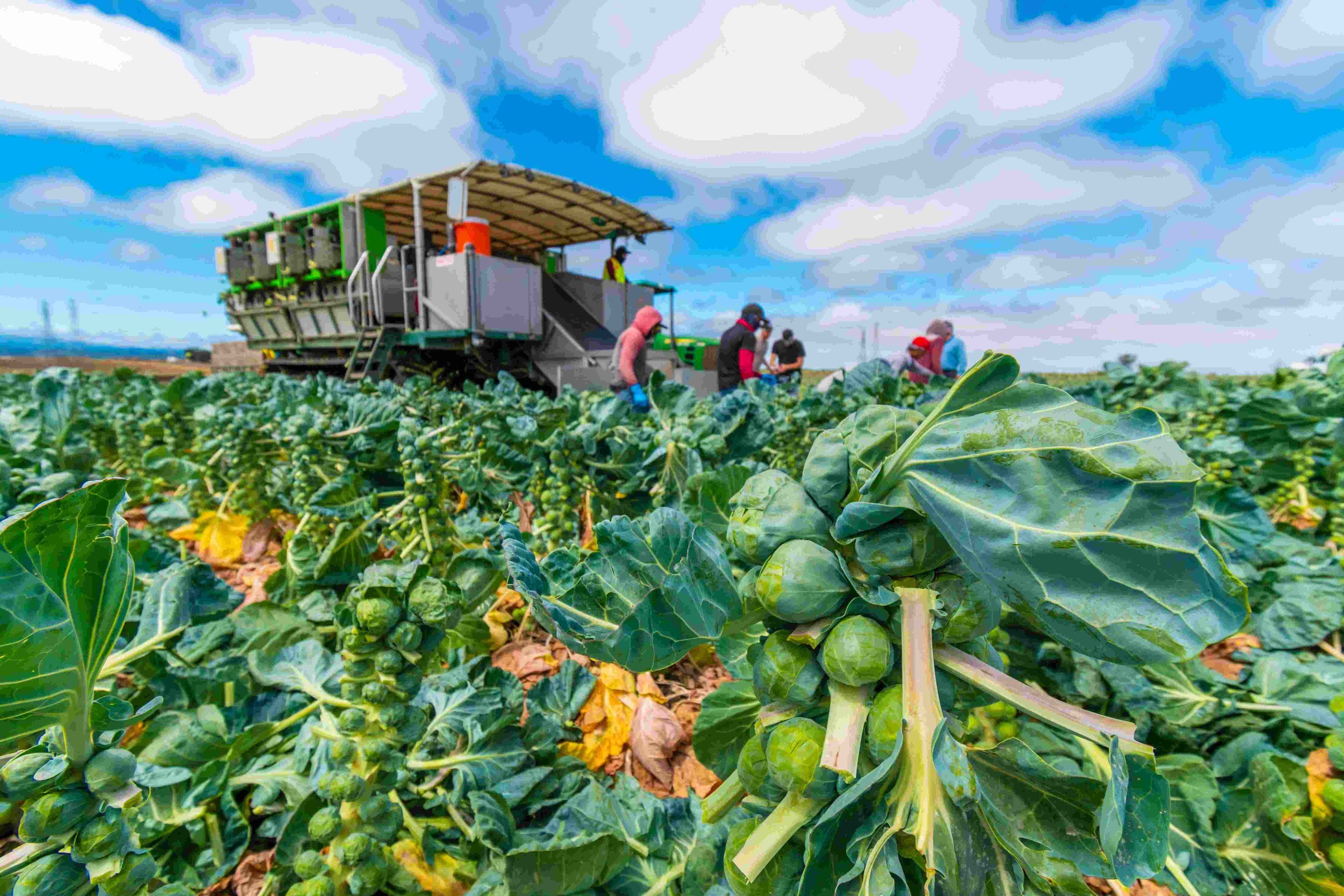Farm-to-table dining is a growing trend that emphasizes the use of fresh, locally sourced ingredients. This approach offers numerous benefits, including supporting local farmers, reducing food miles, and providing customers with healthier, more flavorful dishes. In this article, we will explore the key elements of creating a successful farm-to-table eatery menu, from building relationships with local farmers to planning menus and marketing your concept effectively.
Case Studies of Successful Farm-to-Table Models
The Farm-to-Table Movement in Action
The farm-to-table movement is gaining momentum across the globe, with restaurants and consumers alike embracing the benefits of fresh, locally sourced ingredients. Several successful farm-to-table models have emerged, demonstrating the viability and impact of this approach.
One notable example is Alice Waters’ Chez Panisse in Berkeley, California. Founded in 1971, Chez Panisse has been a pioneer in the farm-to-table movement, working closely with local farmers to create a menu that reflects the seasons and showcases the best of California’s bounty. The restaurant’s commitment to sustainability and community has earned it a Michelin star and a reputation as one of the world’s top culinary destinations.
- Related post: Case Studies of Successful Farm-to-Table Models
- Related post: Farm-to-Table Trends in Fine Dining
Benefits of the Farm-to-Table Approach
The farm-to-table approach offers numerous benefits for restaurants, farmers, and consumers alike. By sourcing ingredients locally, restaurants can reduce their carbon footprint, support their community, and offer their customers fresher, more flavorful dishes.
| Benefits of Farm-to-Table |
|---|
| Reduced carbon footprint |
| Support for local farmers |
| Fresher, more flavorful dishes |
Farmers benefit from the farm-to-table movement by gaining access to new markets and receiving fair prices for their products. Consumers benefit from the increased availability of fresh, healthy food and the opportunity to connect with the people who grow their food.

Farm-to-Table Trends in Fine Dining
Fine dining restaurants are increasingly embracing the farm-to-table movement, recognizing the benefits of using fresh, locally sourced ingredients. This trend is driven by a growing demand from diners for healthier, more sustainable, and flavorful dishes.
One of the pioneers of farm-to-table fine dining is the renowned chef Alice Waters. Her restaurant, Chez Panisse in Berkeley, California, has been a leader in the movement for over 50 years. Waters works closely with local farmers to create a menu that changes daily based on the freshest ingredients available. Her commitment to sustainability and community has earned Chez Panisse a Michelin star and a reputation as one of the world’s top culinary destinations.
| Benefits of Farm-to-Table Fine Dining |
|---|
| Fresher, more flavorful dishes |
| Support for local farmers |
| Reduced carbon footprint |
Other fine dining restaurants are following Waters’ lead and adopting the farm-to-table approach. For example, the restaurant Blue Hill at Stone Barns in Pocantico Hills, New York, has its own farm on the property, where it grows many of the ingredients used in its dishes. This allows the restaurant to control the quality of its ingredients and offer diners a truly unique and immersive farm-to-table experience.
- Related post: Case Studies of Successful Farm-to-Table Models
- Related post: Farm-to-Table Baking and Desserts
Building Relationships with Local Farmers
Building relationships with local farmers is key to a successful farm-to-table eatery. Farmers can provide you with the freshest, highest-quality ingredients, and they can also help you connect with your community. When you work with local farmers, you’re not just supporting their businesses; you’re also supporting your local economy and the environment.
| Benefits of Working with Local Farmers |
|---|
| Fresher, more flavorful ingredients |
| Support for your local economy |
| Reduced carbon footprint |
Here are a few tips for building relationships with local farmers:
- Visit local farmers’ markets and talk to the farmers about their products.
- Attend local food events and meet farmers from your area.
- Join a community-supported agriculture (CSA) program.
- Contact your local agricultural extension office for a list of farmers in your area.
Once you’ve established relationships with local farmers, you can start to work together to create a menu that showcases their products. You can also collaborate on events and promotions that will benefit both your businesses.
Related posts:
- Case Studies of Successful Farm-to-Table Models
- Farm-to-Table Trends in Fine Dining
- Farm-to-Table Baking and Desserts

Menu Planning in Farm-to-Table Cuisine
Understanding Seasonality and Availability
Menu planning in farm-to-table cuisine starts with understanding seasonality and availability. What fruits and vegetables are in season? What meats and seafood are being harvested locally? By working with local farmers and suppliers, you can ensure that your menu is always featuring the freshest, most flavorful ingredients.
Creating a Balanced Menu
A well-balanced farm-to-table menu offers a variety of dishes that cater to different dietary needs and preferences. This means including a mix of appetizers, entrees, and desserts, as well as vegetarian, vegan, and gluten-free options. By offering a diverse menu, you can ensure that everyone at your table can find something they’ll enjoy.
| Appetizers | Entrees | Desserts |
|---|---|---|
| Farm-to-Table Baking and Desserts | The Role of Organic Farming in Farm-to-Table | Understanding the Farm-to-Table Concept |

Sourcing Locally: Challenges and Benefits
Challenges of Sourcing Locally
Sourcing ingredients locally can be challenging for several reasons. One challenge is that local farmers may not be able to produce enough of a particular ingredient to meet your needs. Another challenge is that local ingredients may be more expensive than ingredients that are shipped in from other regions.
Benefits of Sourcing Locally
Despite the challenges, there are also many benefits to sourcing ingredients locally. One benefit is that local ingredients are often fresher and more flavorful than ingredients that have been shipped long distances. Another benefit is that sourcing locally can help to reduce your carbon footprint.
| Benefit | Description |
|---|---|
| Fresher ingredients | Local ingredients are often picked at the peak of ripeness, so they are more flavorful and nutritious. |
| Reduced carbon footprint | Sourcing ingredients locally can help to reduce your carbon footprint because it reduces the distance that food has to travel to get to your plate. |

Farm-to-Table Marketing Strategies
Harnessing Social Media for Farm-to-Table Promotion
In today’s digital age, social media platforms offer a powerful tool for farm-to-table eateries to connect with their target audience and promote their fresh, local offerings. By creating engaging content that showcases the restaurant’s commitment to sustainability and community, eateries can attract new customers and build a loyal following.
- Related post: Farm-to-Table Trends in Fine Dining
| Social Media Platform | Benefits |
|---|---|
| Showcase visually appealing dishes and behind-the-scenes glimpses of the farm-to-table process. | |
| Share updates on menu changes, upcoming events, and community partnerships. |
Collaborating with Local Businesses and Organizations
Partnering with local businesses and organizations can be a mutually beneficial way to promote farm-to-table cuisine. Collaborating with local farmers’ markets, food co-ops, and community gardens can help eateries connect with a wider audience and establish themselves as a hub for fresh, local food.
Related posts:

The Role of Chefs in the Farm-to-Table Movement
Chefs play a vital role in the farm-to-table movement by creating dishes that showcase the freshest and most flavorful local ingredients. They work closely with farmers to understand what’s in season and to create menus that reflect the bounty of their region. By doing so, chefs help to promote sustainable agriculture and support local businesses.
Chefs are also educators. They can teach their customers about the importance of eating seasonally and locally, and they can help to dispel the myths and misconceptions about farm-to-table cuisine. By sharing their knowledge and passion for food, chefs can inspire others to make healthier and more sustainable choices.
| Chef | Restaurant | Location |
|---|---|---|
| Alice Waters | Chez Panisse | Berkeley, California |
| Dan Barber | Blue Hill at Stone Barns | Pocantico Hills, New York |

The Impact of Farm-to-Table on Local Economies
Creating Jobs and Boosting Economic Growth
The farm-to-table movement has a positive impact on local economies by creating jobs and boosting economic growth. When restaurants source ingredients from local farmers, they are supporting local businesses and helping to create a more sustainable food system. In addition, farm-to-table restaurants often attract tourists and other visitors, which can further boost the local economy.
| Jobs Created by Farm-to-Table | Economic Impact |
|---|---|
| Farmers | Increased sales for local farmers |
| Restaurant workers | New jobs created in restaurants and related businesses |
| Tourism | Increased tourism revenue from visitors attracted by farm-to-table restaurants |
Supporting Local Businesses
Farm-to-table restaurants support local businesses by sourcing their ingredients from local farmers and other businesses. This helps to create a more sustainable and resilient local economy. When restaurants buy from local businesses, they are helping to keep money in the community and support local jobs.
- Farmers
- Food processors
- Distributors
- Restaurants
- Other local businesses
Related post: Building Relationships with Local Farmers

Final Thought
Creating a successful farm-to-table eatery menu requires careful planning, collaboration, and a commitment to quality. By following the principles outlined in this article, you can develop a menu that showcases the best of your local ingredients and delights your customers. Remember, the farm-to-table movement is not just about food; it’s about building relationships, supporting your community, and creating a more sustainable food system. Embrace the principles of farm-to-table dining, and you will not only create a successful eatery but also make a positive impact on your community and the environment.




